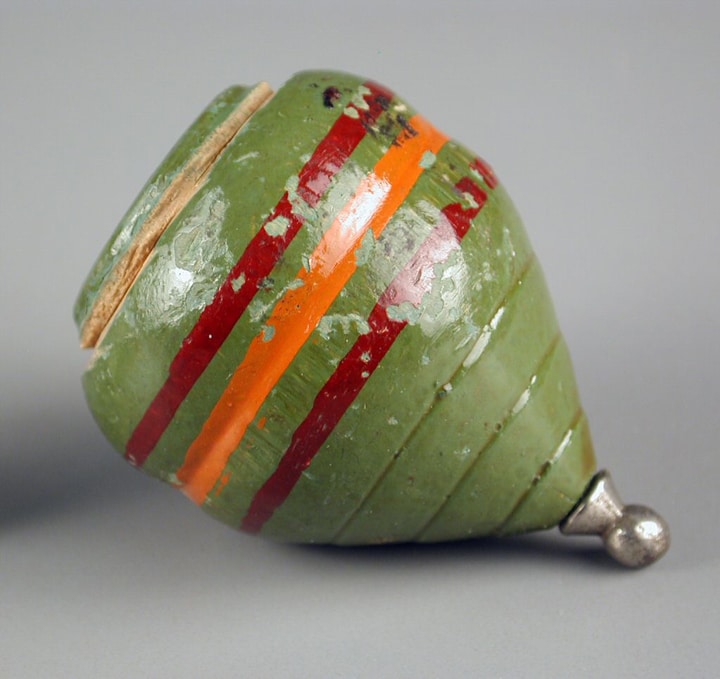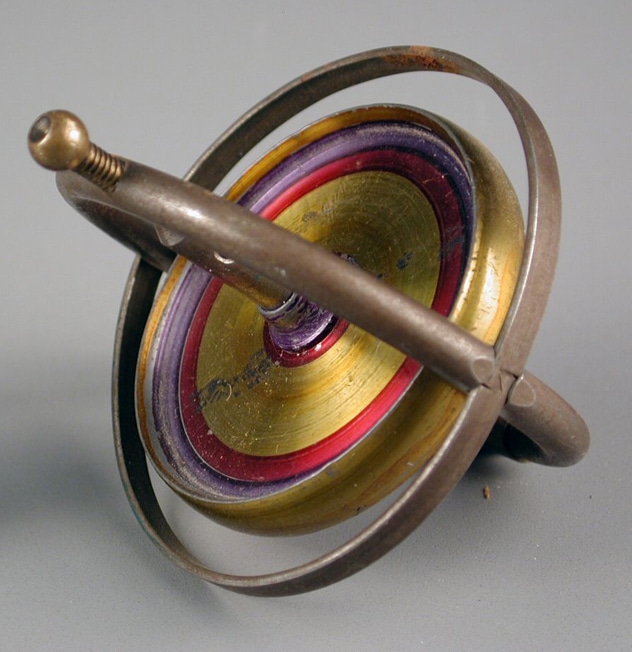 Start with a top. It’s simple, cheap, fun, unbreakable, and memorable; its principles, too, serve as the basis for several other toys. Assembled from a sharpened peg with a wheel attached, you spin the top between a thumb and forefinger and then let it go. The spin creates angular momentum that increases the mass of the wheel, or cone in fancier versions. With forces directed outward at a tangent the top balances, magically it seems, on a point. As friction with the air and with the surface slows the toy, it begins to wobble and losing energy, it eventually skitters off.
Start with a top. It’s simple, cheap, fun, unbreakable, and memorable; its principles, too, serve as the basis for several other toys. Assembled from a sharpened peg with a wheel attached, you spin the top between a thumb and forefinger and then let it go. The spin creates angular momentum that increases the mass of the wheel, or cone in fancier versions. With forces directed outward at a tangent the top balances, magically it seems, on a point. As friction with the air and with the surface slows the toy, it begins to wobble and losing energy, it eventually skitters off.
 You can accelerate the rotation and prolong the spin of a top by attaching a string and rolling it out with a flick of the wrist. Contain the spinning top in a frame, and you’ve created a gyroscope. The gyroscopic effect fights your efforts to change the gyroscope’s position. This seems magical too. Scaled up, the toy stabilizes oceangoing ships and steadies space-faring satellites.
You can accelerate the rotation and prolong the spin of a top by attaching a string and rolling it out with a flick of the wrist. Contain the spinning top in a frame, and you’ve created a gyroscope. The gyroscopic effect fights your efforts to change the gyroscope’s position. This seems magical too. Scaled up, the toy stabilizes oceangoing ships and steadies space-faring satellites.
If you join two cone-shaped tops together with the points at the middle, you’ve made a toy known in America as the Diabolo. Juggle this conjoined top on a string, and you can work up its speed until it whirrs. Then toss this devilishly delightful toy up, catch it, and let it roll along like a wheeled tightrope walker. Toss it again. Now reverse the tops, imagining them as wheels. Attach them in the middle with an axle between. Fix one end of a string to the axle, the other to your finger, and let it spin out of your hand. When the spinning toy runs out of string at the bottom it will catch and then start reeling itself up to return to your hand. At last! You’ve made a yo-yo.



